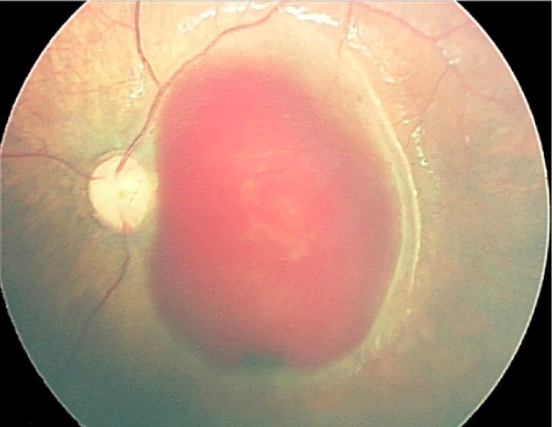Playlist
Show Playlist
Hide Playlist
Child Abuse
-
Slides Non-accidental Trauma.pdf
-
Download Lecture Overview
00:01 In this lecture, we’ll discuss non accidental trauma and child neglect. 00:07 This is a huge topic, but I’ll try and drill down on the important aspects of it. 00:12 So non accidental trauma by definition is an act or failure to act that results in imminent risk of serious physical or emotional harm or death of a child, anyone under 18 years of age, by the parent or caregiver responsible for the child’s welfare. 00:29 So there are four general types of non accidental trauma. 00:32 We talked about neglect, physical abuse, sexual abuse, and emotional abuse. 00:39 And all four of those are illegal. 00:42 So let’s talk about what are risk factors for non accidental trauma. 00:46 Colicky infants are at increased risk for non accidental trauma. 00:50 They’re so fussy, they drive their parents crazy and the parents act out in ways they later regret. 00:56 Children with disability are at increased risk for non accidental trauma. 01:00 Children with emotional problems are at increased risk for non accidental trauma. 01:04 Children of parents who were abused are more likely to abuse themselves. 01:09 And children in foster care are at increased risk for non accidental trauma. 01:14 So how do we tell if a child’s injury is a result of abuse? Probably the most important aspect of it is a changing story or an inconsistent story. 01:24 It’s important for people to document thoroughly exactly the story that the parent relays to them and that parent, we should then follow how their story changes overtime. 01:35 If that story is changing in terms of what they perceived of the event around that child’s injury, this is a strong indicator for the possibility of non accidental trauma. 01:44 Any history of repeated injuries or hospitalization to that child should be of concern and the unexplained delay in seeking care. 01:52 If a child got burned, but it was yesterday, why didn’t they come in yesterday? Any inconsistent injury with the story that’s told by the care provider. 02:02 If a child fell off the couch and has four broken bones, that’s not consistent with the story. 02:08 And likewise, any story of injury inconsistent with developmental abilities of the child. 02:13 “My child reached out and grabbed some coins and swallowed them,” but this child’s only six months of age or maybe even three months of age, it’s really unlikely this child could’ve gotten access to those coins or actually physically swallow them. 02:27 Some few things that we find that are consistent with non accidental trauma is extensive bruising. 02:33 Also, certain bruising patterns may be concerning such as hand marks or belt marks or linear marks could indicate some sort of abuse. 02:43 Something we’re seeing frequently now is phone charging cords being a cause. 02:47 And also bite marks can be concerning. 02:52 Also, unusual bruise patterns. 02:54 For example, here, you can see the actual areas of the finger where the parent was holding the child by the head. 02:59 Flexor surfaces are usually more concerning for non accidental trauma. 03:05 It’s unusual to bruise yourself from the inside of your elbow for example. 03:09 Anywhere around the ears is usually concerning for possible non accidental trauma or bruising around the neck, torso or abdomen as well. 03:17 Certainly, bruising of the genitalia will be extremely unusual in an accident. 03:23 So here’s an example of an injury from a whip. 03:27 Oftentimes, people will use electrical cords or phone chargers, this is abusive. 03:33 And what’s useful perhaps about this picture is you can see how those marks change over time. 03:39 The first picture is an acute event and the second one’s after those marks have healed. 03:44 But you can see that these are of linear excoriations or linear marks and they scar linearly, that’s highly indicative of a case of non accidental trauma. 03:55 Here’s an example of a belt mark and you can see the actual head of the belt and how it slapped against the skin with the small pin in it. 04:02 So we can often see the shape of the object that caused the mark and that’s a sign that this is non accidental trauma and this has gone above and beyond what we would expect in terms of normal parenting. 04:15 This is a difficult image to view, but this is an example of intraoral injury. 04:20 So we will sometimes see torn frenulum, which is that tag underneath the tongue that adheres the tongue to the bottom of the mouth. 04:28 If that’s torn, it could be evidence of something being forced into the child’s mouth. 04:34 In this child’s case, the father was raping this child’s mouth and you can also see bruising around the lips. 04:41 But we can see frenulum tears also with things like forced bottle feeding, which may be a sign. 04:47 So it’s important to inspect the internal oral cavity. 04:50 Patient’s burns can be very concerning for potential non accidental trauma and certainly when we see unusually burn patterns, we have to worry about this. 05:01 One of the classic ones that you’ll see on exam is sparing of the creases. 05:04 So if you look at this drawing, this child was immersed into hot water and you can see that the creases of the skin are spared. 05:12 This is because as they’re going into the water, the legs come up and you can sort of see that the creases are against each other, so the water isn’t injuring that part of the skin. 05:21 So sparing of the creases is highly concerning for non-accidental trauma. 05:27 Certainly any burn in a stocking or glove-like pattern is suspicious. 05:32 And round burns may be a result of stamping out cigarettes on children. 05:38 Also, we may see pattern burns such as the use of an iron to burn a child. 05:43 We’ve definitely seen that in the past. 05:46 Here’s an example of a burn that was concerning and you can see how those are linear marks. 05:52 Careful history and, eventually, the parent confessed that they’d heated up a fork and then pushed it against the child’s skin as a way of causing abuse. 06:01 So any linear marks like this are very concerning.
About the Lecture
The lecture Child Abuse by Brian Alverson, MD is from the course Pediatric Emergency Medicine.
Included Quiz Questions
Bruising on which of the following locations in a child is most suggestive of non-accidental trauma?
- Ears
- Extensor surfaces of limbs
- Shins
- All bruises are suggestive of non-accidental trauma
- Bruises are never suggestive of non-accidental trauma
Which of the following is not a risk factor for non-accidental trauma?
- Child who attends daycare
- Child with disablity
- History of parents who were abused
- Child with emotional problems
- Colicky infant
An infant is brought to the physician because of constant crying. Which of the following most likely raises suspicion about non-accidental trauma?
- An inconsistent story
- A bruise on one knee
- No prior history of a similar presentation
- Increased crying during the day
- No physical examination findings
Which of the following findings in a child is most concerning for non-accidental trauma?
- 1st-degree burn from waist down with sparing of the creases
- 2nd-degree burn over the shin
- 2nd-degree burn over the trunk
- 1st-degree burn involving sun-exposed areas of the skin
- Burn without a pattern
Customer reviews
5,0 of 5 stars
| 5 Stars |
|
1 |
| 4 Stars |
|
0 |
| 3 Stars |
|
0 |
| 2 Stars |
|
0 |
| 1 Star |
|
0 |
Thank you for your very helpful lecture on this topic, which is a very upsetting one. I appreciate your expertise and thank you for the work you do.




